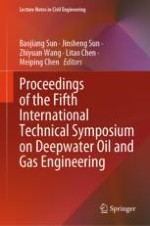2024 | OriginalPaper | Chapter
Experimental Investigation on the Formation and Agglomeration Characteristics of Methane Hydrate in Oil-Water System in Presence of Anti-agglomerants
Authors : Changhong Yu, Baojiang Sun, Cheng Yue, Jiakai Ji, Pengcheng Jing, Yuxiang Xia, Litao Chen
Published in: Proceedings of the Fifth International Technical Symposium on Deepwater Oil and Gas Engineering
Publisher: Springer Nature Singapore
Activate our intelligent search to find suitable subject content or patents.
Select sections of text to find matching patents with Artificial Intelligence. powered by
Select sections of text to find additional relevant content using AI-assisted search. powered by
